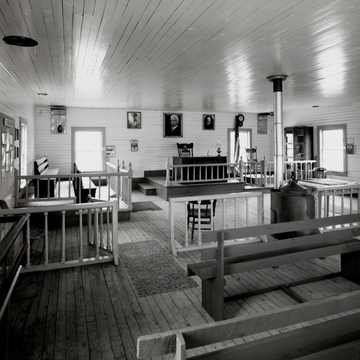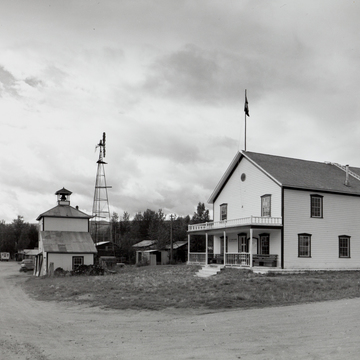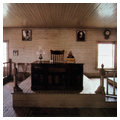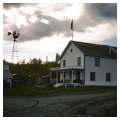A two-story, wood-framed building, the U.S. Courthouse was constructed in 1901 due to the efforts of Judge James Wickersham, who collected business license fees and court fines to finance its construction. The windows and doorway have pedimented surrounds, and there is a balustraded porch across the front. The large blank space between the two windows at the second floor of the gable front denotes the judge's bench on the interior. The entire second floor of the building was occupied by the courtroom, while the first floor was used for a variety of federal offices. Whereas the federal government regularly asserted an architectural presence with customs houses and courthouses, often combining them in one structure along with the post office to allow greater monumentality, in Eagle a domestic appearance was adequate. Still, this is by far the largest building in town. This building, like the customs house, is now a museum, open to the public.
You are here
U.S. Courthouse
If SAH Archipedia has been useful to you, please consider supporting it.
SAH Archipedia tells the story of the United States through its buildings, landscapes, and cities. This freely available resource empowers the public with authoritative knowledge that deepens their understanding and appreciation of the built environment. But the Society of Architectural Historians, which created SAH Archipedia with University of Virginia Press, needs your support to maintain the high-caliber research, writing, photography, cartography, editing, design, and programming that make SAH Archipedia a trusted online resource available to all who value the history of place, heritage tourism, and learning.





















